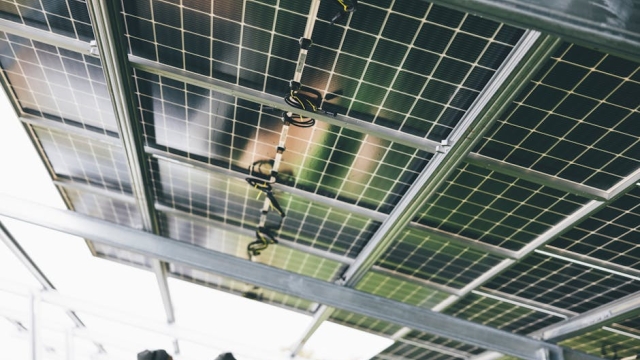
Sustainable energy initiatives play a crucial role in addressing the global energy crisis and combating climate change. Among various approaches, offshore wind energy has emerged as a significant contributor to achieving these goals. By harnessing the power of wind over oceans, offshore wind farms can generate substantial amounts of electricity, reduce greenhouse gas emissions, and promote energy independence. This article explores the landscape of sustainable energy initiatives, focusing on offshore wind energy, showcasing successful projects worldwide, and discussing future trends and innovations in the sector.
Overview of Sustainable Energy Initiatives in Offshore Wind Energy
Sustainable energy initiatives encompass a broad range of strategies aimed at reducing reliance on fossil fuels and transitioning to renewable energy sources. Offshore wind energy is a prime example of this shift, leveraging the strong and consistent winds found over bodies of water. These initiatives not only provide a cleaner source of energy but also promote job creation and economic growth in coastal communities. The deployment of offshore wind farms requires significant investment and planning, but the long-term environmental and economic benefits make it a worthwhile endeavor.
Case Studies of Successful Offshore Wind Projects
Numerous offshore wind projects around the world demonstrate the effectiveness of sustainable energy initiatives. Here are a few notable examples:
1. Hornsea One, United Kingdom
Hornsea One is one of the largest offshore wind farms globally, located in the North Sea. With a capacity of over 1.2 gigawatts, it can power over one million homes. The project exemplifies the scalability of offshore wind energy and showcases successful collaboration between private companies and the government. Challenges included navigating complex regulatory frameworks and ensuring minimal impact on marine life, which were addressed through extensive environmental assessments and stakeholder engagements.
2. Block Island Wind Farm, United States
Situated off the coast of Rhode Island, the Block Island Wind Farm is the first commercial offshore wind farm in the United States. It consists of five turbines and has a capacity of 30 megawatts. This project has not only provided clean energy to the island but has also significantly reduced energy costs for residents. The initiative faced challenges related to public perception and regulatory hurdles, but it ultimately paved the way for future offshore projects in the country.
3. Gemini Wind Park, Netherlands
The Gemini Wind Park is another significant offshore wind project, located in the Dutch part of the North Sea. With a capacity of 600 megawatts, it supplies electricity to approximately 1.5 million households. The project serves as a model for sustainable energy initiatives, demonstrating how large-scale offshore wind farms can operate while minimizing environmental impacts. Key challenges included logistical complexities and ensuring supply chain sustainability, which were addressed through innovative planning and partnerships.
| Project | Location | Capacity (MW) | Homes Powered |
|---|---|---|---|
| Hornsea One | United Kingdom | 1200 | 1 million+ |
| Block Island Wind Farm | United States | 30 | 17,000 |
| Gemini Wind Park | Netherlands | 600 | 1.5 million |
Future Trends and Innovations in Sustainable Energy Initiatives
As the demand for clean energy continues to grow, the future of offshore wind energy looks promising. Several trends and innovations are shaping the landscape of sustainable energy initiatives:
1. Floating Wind Turbines: Advancements in technology are making it possible to install wind turbines in deeper waters, where winds are stronger and more consistent. Floating wind farms can be deployed in locations previously deemed unsuitable for traditional turbines, expanding the potential for offshore wind energy. 2. Hybrid Energy Systems: Combining offshore wind with other renewable energy sources, such as solar or tidal energy, can create more resilient and efficient energy systems. These hybrid systems can optimize energy output and enhance grid stability, making them an attractive option for future developments. 3. Energy Storage Solutions: As offshore wind energy generation is intermittent, innovations in energy storage technologies, such as batteries and pumped hydro, are essential. These solutions can help store excess energy for use during periods of low wind, ensuring a consistent energy supply. 4. Sustainability in Supply Chains: As awareness of environmental impacts grows, there is a focus on creating sustainable supply chains for offshore wind projects. This includes sourcing materials responsibly and minimizing carbon footprints throughout the lifecycle of wind farms. In conclusion, sustainable energy initiatives, particularly in the realm of offshore wind energy, represent a vital step towards a more sustainable future. By examining successful projects and embracing emerging trends, stakeholders can work together to foster innovation and ensure that clean energy solutions are accessible for generations to come. As individuals and communities consider their energy choices, the potential of sustainable energy initiatives offers a pathway toward a healthier planet and a more sustainable economy. For more information on how to engage with sustainable energy initiatives, consider exploring resources from specialized services.
